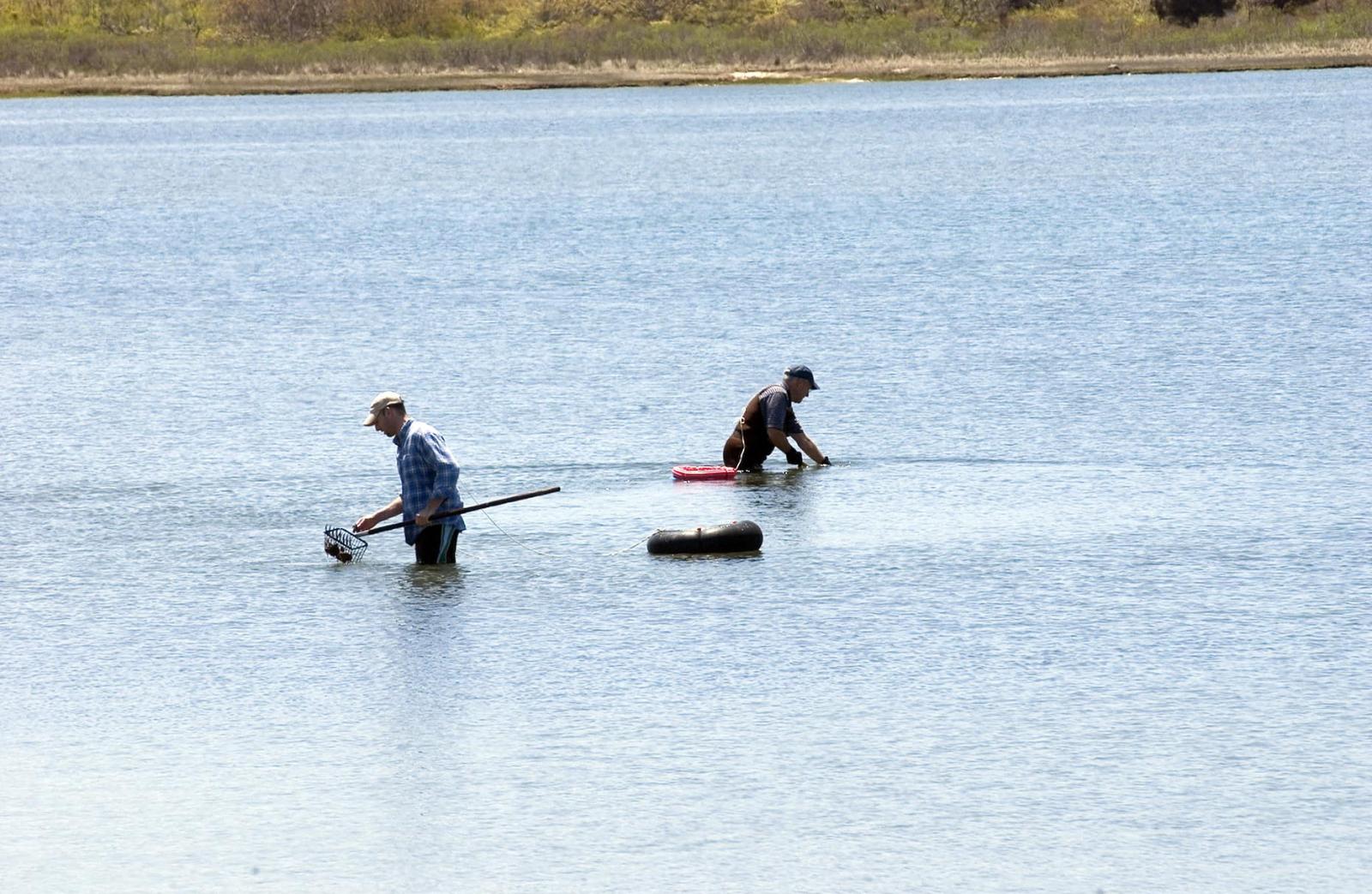It is hoped a costly new regime of water quality tests for Sengekontacket Pond, which began this week, will identify the source of its water quality problems and may allow the pond to be open more often for shellfishing.
Following a string of poor water quality test results last year, the state Division of Marine Fisheries imposed a mandatory summer closure period on the pond. That period begins this Sunday, June 1, and runs to October.
But DMF testing of Sengekontacket’s water so far this year has not shown any repeat of the high bacterial levels recorded last year, and now the two towns abutting the pond, Edgartown and Oak Bluffs, have also begun their own testing.
The new program will not only test for the fecal coliform bacteria which have been the pond’s major problem in recent years, but also seek to identify the sources of the bacteria, whether birds, other animals or human in origin. And they will look also at the amounts of nutrients entering the pond.
The first of the bacterial test samples were taken on Wednesday this week, and will be analyzed at a laboratory in Aquinnah.
Ultimately the hope is to provide a second opinion on water quality to the state which might lead to reopening of the pond for some or all of the season in future, and point the way to remediation measures.
Edgartown shellfish constable Paul Bagnall said at this stage, however, the project still needs more funding.
“It’s going to be quite expensive,” he said. “Between the two towns, just for the water sampling it’s somewhere in the neighborhood of $30,000.”
So far, each town has committed $5,000. The Friends of Sengekontacket group also plans to contribute funds and several landowners close to the pond have pledged some money as well. The amount of testing in any one of the various categories is dependent on finding the cash.
“Over the winter Oak Bluffs and Edgartown selectmen formed a committee, meeting every other Friday, to hammer out various issues, testing-wise this summer, both to check bacteria and go for source ID,” Mr. Bagnall said.
The plan is to sample bacteria levels every two weeks, do the more complex and expensive DNA source testing on bacterial samples at least monthly in June, July and August, and also check nutrient loads periodically.
“The DMF came up with a closure date,” said Mr. Bagnall, “and the sampling the state will do will test that date. They are looking at a scenario where you can be open as much as possible depending on the history of the sampling.
“We can’t base opening and closing decisions on [tests done for the towns by] the local lab, but we can keep an eye on how things are going, and if the numbers are remaining low, supply that information to DMF, to get them to schedule another sample round.”
The program will send samples to a variety of places for analysis, he said.
“The bacteria’s being done at the Aquinnah lab,” he said. The nutrient sampling is done by the Center for Marine Science and Technology at New Bedford, which operates through the University of Massachusetts at Dartmouth.
“And the DNA source testing is done by the University of New Hampshire, Durham. It sorts out what percentage [of the coliform contamination] is birds, or dogs or what have you. As the season changes, so might the sources,” Mr. Bagnall said.
Identifying the sources might be one of the most important steps to getting the pond reopened. After last season’s repeated findings of unsafe levels of coliforms, initial source testing suggested birds — specifically cormorants which inhabit the pond in large numbers — were responsible for much of the contamination.
Subsequently there was talk of culling the birds, or organizing expeditions to addle eggs in their nests. But cormorants are a protected species.
Naturalist Augustus Ben David 2nd, who advised the two-town committee on testing, said he had doubts about the science employed to date on the pond, and the attribution of blame.
“I don’t know it was that conclusive on birds being responsible,” he said.
“Some biologists think if you eliminated all the cormorants from Sengekontacket you still would probably have a problem.
“It’s a combination of things, birds, dogs, cats, other animals, people, septic systems, nutrient loading.
“And it seems to me there’s something wrong with the method of testing now. I find it difficult to believe that pond has such a high level of coliform count that it has to be closed for that length of time.”
“So I’m a great advocate of more sophisticated testing. I think that’s what it’s going to take to determine what each contributor is putting into the pond.”
Mr. Ben David said if it is conclusively shown that cormorants are the problem, he would have no problems with a control program, much as happens with deer populations on the Island.
“You have to have concise science before you can approach both the departments of fisheries and wildlife services and advocate an eradication or control program for a bird that is federally and state protected,” he said.
He suspects, though, that the biggest part of the problem is poor water circulation in the pond.
“Sengekontacket is an aging pond. It wants to become a freshwater pond, that’s the natural sequence. The pond, every year, shoals and fills in. If you left it alone, both those openings would eventually close.
“The way you rejuvenate it is to dredge it. A massive volume of water going into that pond will be the main answer I think, to the coliform problem,” Mr. Ben David said. He concluded:
“However, these are trying times and you’ve got to prioritize. It doesn’t seem dredging is a priority [in Oak Bluffs when] you’ve got this big override question. If it isn’t passed you’ve got teachers losing jobs.”





Comments
Comment policy »